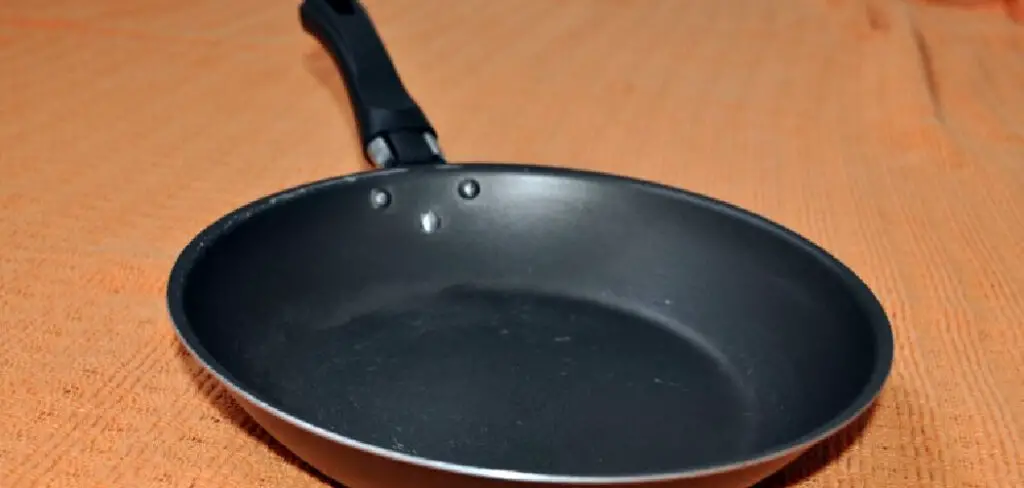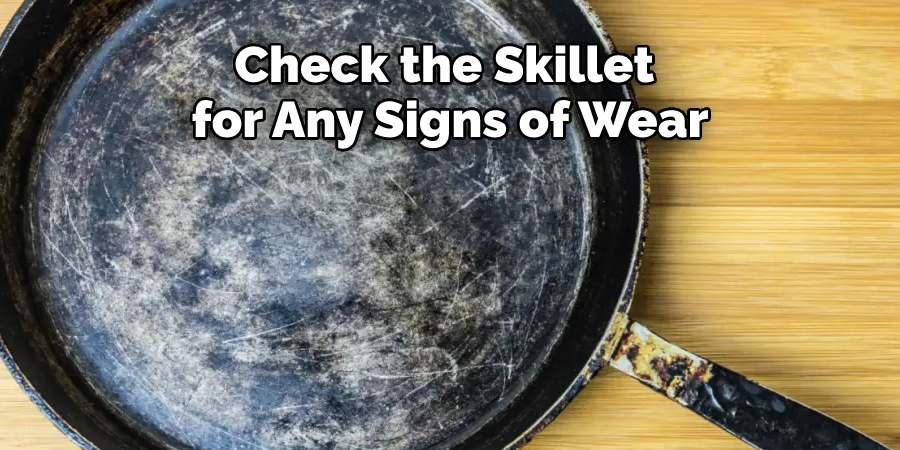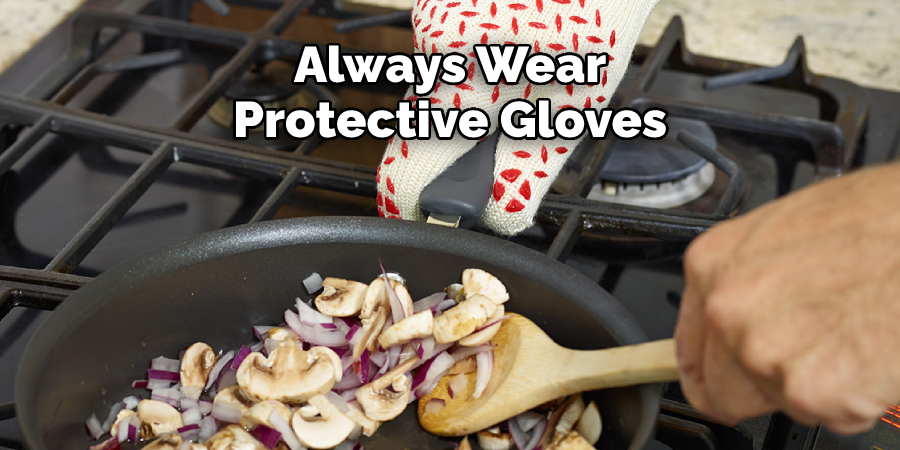There are many advantages to knowing to fix a sticky cast iron skillet. A well-seasoned skillet is virtually nonstick and can last for generations, so maintaining it is essential. Additionally, a properly seasoned pan will keep food from sticking, making your cooking experience much more enjoyable and successful. Lastly, keeping cast iron skillets well-seasoned will be much easier to clean and maintain in the long run.
The advantage of learning to fix a sticky cast iron skillet is that it will not only save you time and money, but also the hassle of having to purchase an entirely new skillet. Fixing a sticky cast iron skillet is relatively easy and inexpensive since all you need are some basic supplies such as baking soda, vegetable oil, paper towels, and an old toothbrush or metal scrubber.
All of these supplies are easy to find around the house or in stores, making this project both inexpensive and simple. In this blog article, you can find step-by-step instructions on how to fix a sticky cast iron skillet.

How Often Should You Reseason Your Cast Iron Skillet?
Proper care and maintenance are essential to keeping your cast iron skillet in top condition. How often you should reseason your skillet depends on how frequently it is used and the type of food being cooked. If you use your cast iron skillet every day, it’s best to reseason it regularly. A good rule of thumb is to reseason your skillet every two months. This will help the seasoning stay intact and prevent any sticking or rusting that could occur with frequent use.
If you only use your cast iron skillet occasionally – such as once a month or less – then it’s best to reseason your skillet every six months. This will ensure that your skillet is properly seasoned and ready to use whenever necessary. No matter how often you use your cast iron skillet, it’s important to reseason it regularly. This will help maintain the seasoning on your skillet, which in turn helps prevent sticking or rusting.
Step-by-Step Instructions for How to Fix a Sticky Cast Iron Skillet

Step 1: Inspect the Skillet
Check the skillet for any signs of wear and tear. If there are deep scratches or chips, it’s best to discard the pan and buy a new one. Place the cast iron in hot soapy water and scrub away food particles with a brush or steel wool. Dry thoroughly with a clean cloth or paper towel.
Step 2: Season the Skillet
Seasoning the skillet is key to restoring it and preventing future sticking. Heat a few tablespoons of oil over low heat in the pan and use a paper towel or cloth to spread it around. Increase the temperature slightly, then remove from the heat and let cool for several minutes. Wipe off any excess oil with a paper towel.
Step 3: Store Properly
Be sure to store the skillet in a cool, dry place and avoid stacking it with other pans. This will help ensure that it stays seasoned and does not become sticky or warped over time. When using the skillet, be sure to use low or medium heat and avoid sudden changes in temperature.

Step 4: Clean Carefully
When cleaning the skillet, never use soap—cast iron is very porous and can absorb unwanted flavors from cleaners and soaps. Instead, use warm water and a brush or steel wool to scrub away food particles. Dry thoroughly with a clean cloth or paper towel and re-season the skillet if necessary.
By following these steps, you can easily fix a sticky cast iron skillet and enjoy many tasty meals with it in the future.
Tips for How to Fix a Sticky Cast Iron Skillet
- Always wear protective gloves to avoid burning your hands when dealing with hot pans.
- Make sure to use a proper-fitting mitt or glove when moving the pan, as it can be very hot and cause serious burns if handled carelessly.
- Wear safety glasses when using a wire brush to clean the skillet, as it can create sparks and flying particles.
- Use tongs or pliers to remove the sticky bits from the skillet, as using your bare hands could lead to burns.
- Do not use abrasive cleaners or scrubbers on a cast-iron skillet, as they can damage the seasoning and make it more susceptible to rusting.
- Preheat your skillet before adding oil or butter so that it doesn’t stick to the surface.
- Allow the pan to cool completely before washing or storing it, as hot pans can cause dangerous steam buildup and make them difficult to handle.
Following these tips will help you keep your cast iron skillet in perfect condition for years to come.

What Should You Avoid When Trying to Fix a Sticky Cast Iron Skillet?
- Avoid using metal utensils when cooking with a cast iron skillet, as these may scratch the surface and create more stickiness.
- Avoid using too much oil or butter in the skillet, as this may cause food to become stuck in the pan.
- Do not use harsh scrubbers or abrasive cleansers when cleaning the skillet, as these may damage the surface.
- Avoid cooking acidic foods in a cast iron skillet, which may cause corrosion and further stickiness.
- Do not heat up a cast iron skillet too quickly or leave it at high temperatures for too long, as this may also cause sticking.
- Finally, be sure to always dry the skillet completely after washing it and before storing it away. Moisture can create conditions conducive to sticky buildup.
- Avoid leaving your cast iron skillet stored in a damp area, as this may cause further stickiness.
By avoiding these practices, you will have an easier time keeping your cast iron skillet clean, smooth, and non-sticky. Following the steps above will ensure that you get the most out of your cast iron skillet for years to come.
How Can You Prevent Your Cast Iron Skillet From Becoming Sticky Again?
- Clean the Skillet After Each Use: After every use, clean your cast iron skillet with a little warm water and soap to prevent grease and other food particles from sticking to it.
- Dry Your Skillet Thoroughly: Make sure to dry your cast iron skillet completely before storing it away. This will help keep moisture out, which can cause food to stick.
- Season Your Skillet Regularly: Make sure to season your cast iron skillet at least once a year with a thin layer of vegetable oil or lard. This will help create an additional barrier between the metal and any food particles that might try to stick.
- Use Only Cooking Oils That Are Suitable for Cast Iron Skillets: Some cooking oils are not suitable for use with a cast iron skillet. This includes vegetable oil and olive oil as they are too thick to season properly. Instead, use lard, coconut oil or flaxseed oil when seasoning your pan.
- Heat the Skillet Before Adding Food: Before adding any food to the pan, preheat it first. This will help create an additional barrier between the metal and food particles, preventing them from sticking.
Following these steps will help keep your cast iron skillet in good condition and prevent it from becoming sticky again. With proper care and seasoning, you can easily fix a sticky cast iron skillet so that it can continue to be used for years to come.
How Often Should You Inspect Your Cast Iron Skillet for Any Signs of Damage?
Inspecting your cast iron skillet regularly for any signs of wear and tear or damage is important. It is also a good idea to give the cooking surface a quick buff with some steel wool or a wire brush after each use, as this can help remove any residue that may have been left behind from food cooked in the pan. Additionally, it’s time to fix the issue if you notice any signs of rust or if the skillet becomes sticky.

There are a few different ways that a cast iron skillet can be fixed when it becomes sticky. The most common method is to use some baking soda and water to create a paste that can be applied directly to the cooking surface. This paste should be left on for at least an hour before it is wiped off with a damp cloth.
Another solution is to use some salt and oil, which can also be applied directly to the skillet. Again, this should be left on for at least an hour before wiping off with a damp cloth. If you notice any rust spots, it is important to use a rust remover on the pan before using either of these solutions, as this will ensure the skillet is free from any corrosion.
Conclusion
In conclusion, restoring a sticky cast iron skillet is fairly simple. All you need are some basic supplies, a few easy steps, and patience. First, preheat the skillet over medium heat for several minutes to burn off any existing residue. Then use steel wool or sandpaper to remove any remaining debris and create a smooth surface.
Next, scrub the pan with hot soapy water and dry it completely. Once the skillet is clean, season it with a light coating of oil or melted lard and bake in an oven on low heat for around an hour. I hope this article has been beneficial for learning how to fix a sticky cast iron skillet. Make Sure the precautionary measures are followed chronologically.

